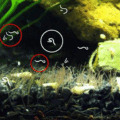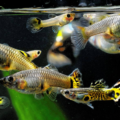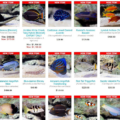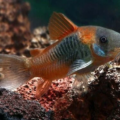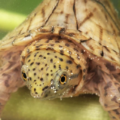Come learn about the unique world of the Chinese Softshell Turtle! Everything from how to care for, feed, and house to breeding and providing health care for this quirky aquatic reptile in a home setup.
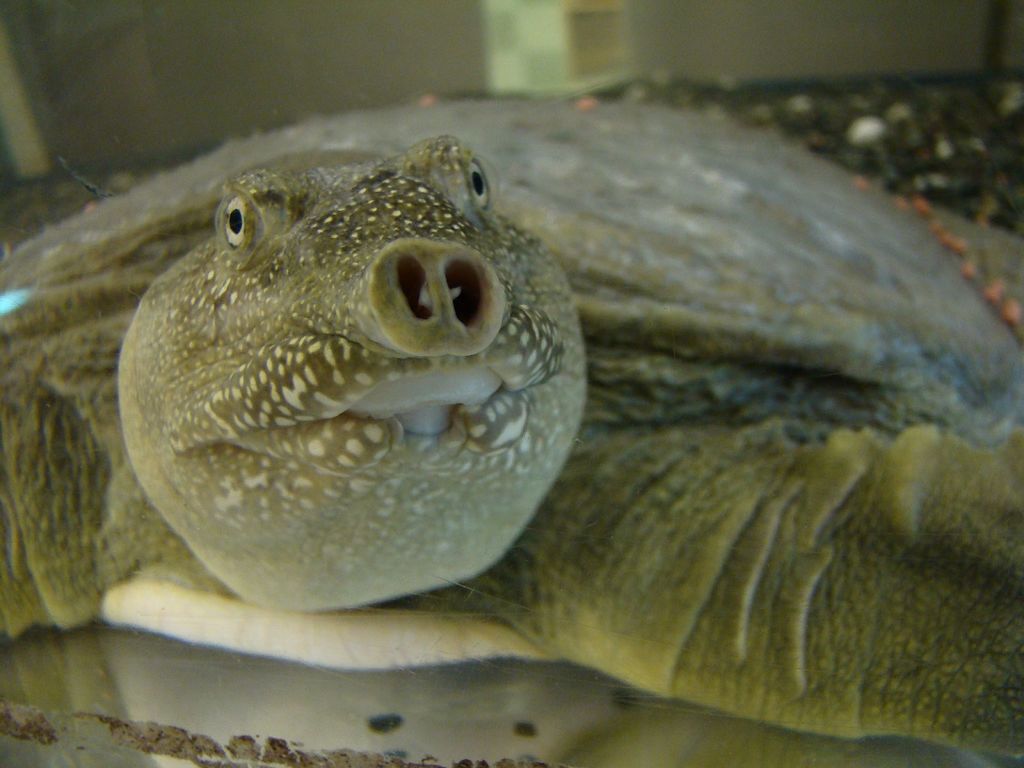
Introduction
Do you want to know some interesting Pelodiscus sinensis species facts? This East-Asian native has a flat, soft, and leathery shell and a snorkel-like nose with an incredible swimming ability and high energy levels, which makes it an agile predator.
Whether in its natural habitat or an aquarium, the Chinese Softshell Turtle is always active and alert. These turtles are strong swimmers, fast movers, and surprisingly agile predators.
Turtle enthusiasts and experienced turtle keepers must understand softshell turtle behavior before adding it to a private aquarium. This Chinese Softshell Turtle overview contains that and much more information, so buckle up as you embark on this new journey.
Author’s Note: Check out our post The 14 Types of Freshwater Turtles for even more great semi-aquatic pets!
Quick Sidenote: Do you want to watch this article instead of reading it? Checkout the highlight video below from our YouTube Channel (Or read the more detailed article below), be sure to Subscribe For More Great Fishkeeping Content:
Aquarium Setup for Softshell Turtles: Prioritize Space and Soft Substrate
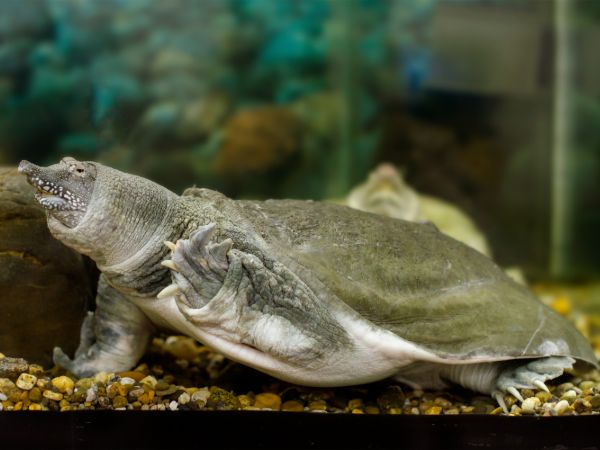
These turtles love to swim, burrow, and hide, so your softshell turtle habitat design should reflect that lifestyle.
Tank Size
When it comes to a Chinese Softshell Turtle tank setup, space is everything. These turtles need lots of room to swim and explore, so start with at least 75 gallons for one adult.
If you plan to keep one long-term, bigger is better. We recommend using 100+ gallons of water so that your turtle has enough space to enjoy swiming.
Water depth should be at least 12 – 18 inches. This is deep enough for swimming but shallow enough for them to surface easily.
Filtration & Water Quality
These turtles are messy eaters and produce alot of waste, so invest in a strong canister filter or external filtration system. You’d also need to do partial water changes weekly and make sure that the water temperature is between 75–82°F.
Substrate & Decor
These turtles are burrowers by nature, and that’s why you should choose fine sand as your substrate. Avoid hard or sharp gravel or rock so that your turtle doesn’t injure or irritate its soft shell.
As for decorations, make sure they aren’t sharp and keep them minimal. Chinese Softshell turtles like to swim freely without bumping into things.
Basking Area
Add a ramp, a heat lamp, and UVB lighting. Although Pelodiscus sinensis don’t bask as often as some turtles, UVB is important for their shell and bone health. Keep the temperature in the basking area around 85-95°F.
Follow these aquatic turtle enclosure tips to create the perfect environment for your softshell turtle. Up next, understanding their behavior!
Observing the Behavior of pet Pelodiscus sinensis
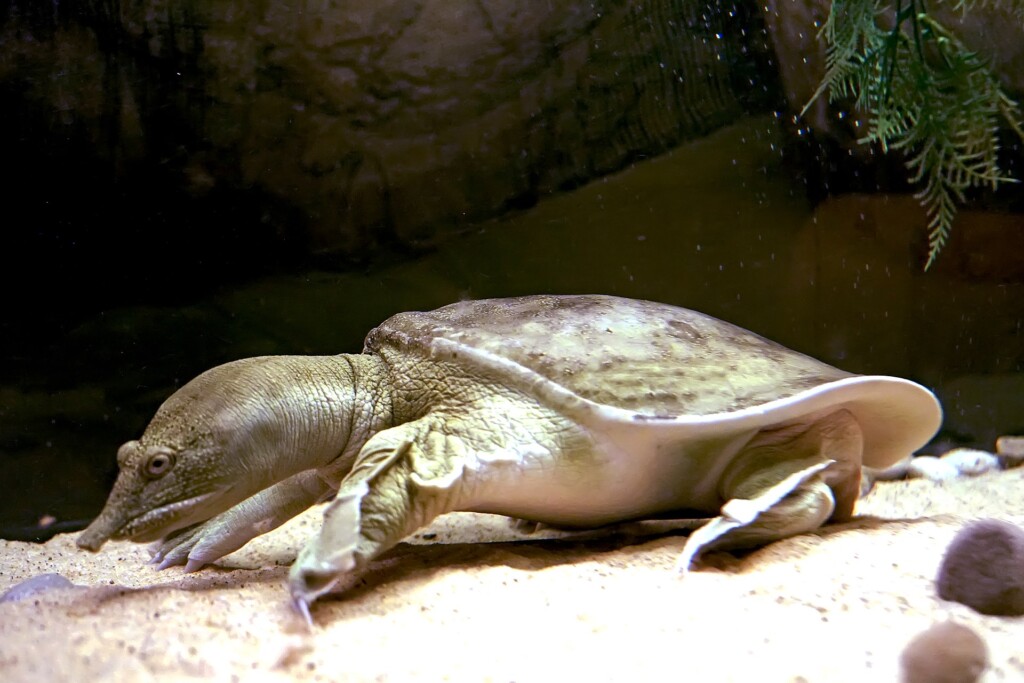
One thing you’ll notice right away is that Chinese Softshell Turtle activity is constant. Expect a lot of movement, especially during feeding or when exploring their tank.
Chinese Softshell turtles are pretty exciting to observe. These curious, alert, and great swimmers prefer to spend most of their time underwater. But softshell turtle aggression is a real thing, so keep handling to a minimum.
Another cool trait is their turtle burrowing behavior. They love digging into the sandy substrate, often hiding there to rest, feel secure, or keep cool.
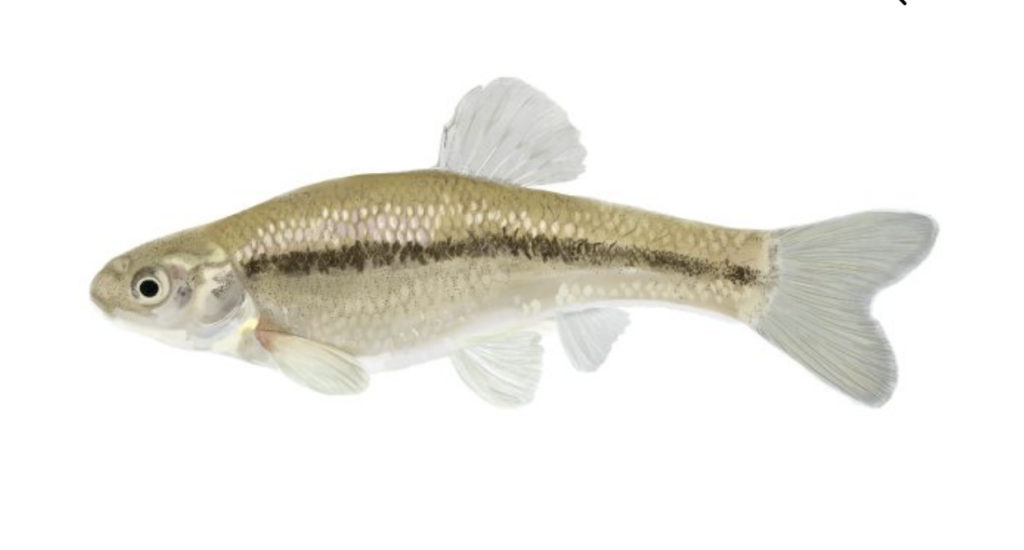
Diet Suggestions
The Pelodiscus sinensis diet should mimic what they’d eat in the wild. Feed them with the following:
- Feeder fish (like guppies or minnows)
- Worms (like earthworms or bloodworms)
- Shrimp and insects (crickets, mealworms)
- Floating turtle sticks or protein-rich pellets
- Fresh shrimp
Occasionally, you may add leafy greens like kale and dandelion to the softshell turtle food.
Author’s Note: Check out our Complete Guide To Turtle Food: What To Feed And Why It Matters for detailed food recommendations!
Feeding Tips
Stick to carnivorous turtle feeding guidelines: Feed the juveniles daily and the adults every other day. Always watch for aggressive behavior during feeding because they can get territorial.
Calcium Source
Add a source of calcium, like cuttlebone or supplement, to your turtle’s diet twice a week for a strong and healthy shell.
Housing Compatibility: Can Softshell Turtles Live with Others?
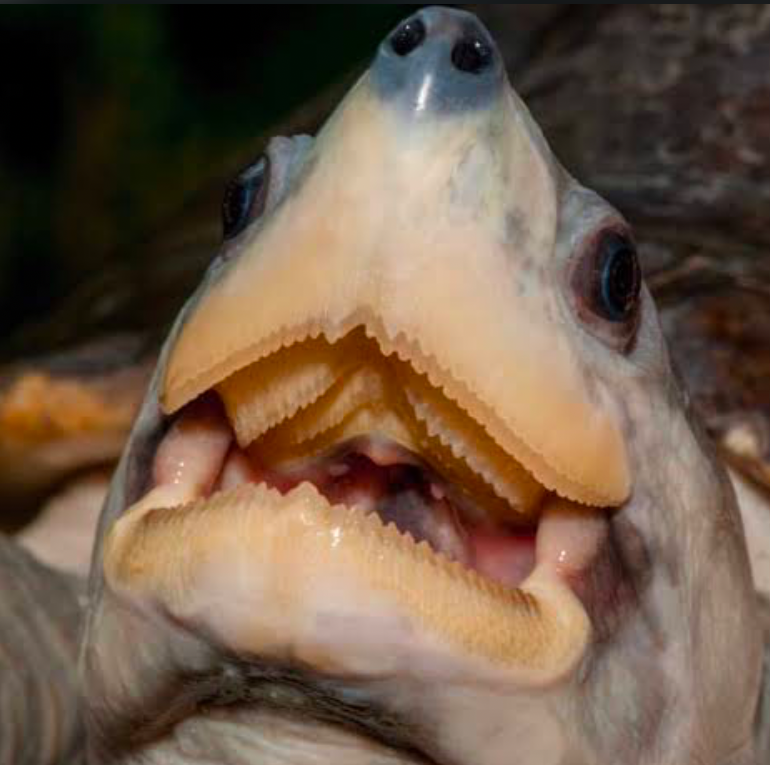
Short answer? Usually not. With Pelodiscus sinensis turtle compatibility, concerns are no joke. They’re fast, strong, and can get aggressive when sharing space, especially with other turtles or fish.
The idea of Chinese Softshell Turtle tank mates may sound great, but in reality, these turtles are very territorial and aggressive. If you’re not experienced with housing aggressive turtles, it’s best to keep your softshell alone.
If you’re determined to try, a massive pond with visual barriers and lots of hiding spots is the only setup that might work, and consider large and fast-swimming fish like giant danios.
Breeding Behavior and Reproductive Traits

Breeding Pelodiscus sinensis requires patience, planning, and a calm environment. Successful aquatic turtle reproduction is possible, but only in the hands of experienced keepers.
Mating Season
The best time for mating is spring through early summer when it’s warm. Before breeding, make sure both turtles are healthy and similar in size.
Nesting Needs
Provide a dry area, such as a separate nesting box filled with soft, damp sand, for females to lay eggs.
Egg Incubation
Pelodiscus sinensis egg care involves keeping eggs in a humid, warm space. It lasts about 60 – 80 days, depending on environmental conditions.
Interested in softshell turtle breeding? Be ready for the challenges that come with aggression and delicate egg care.
Common Health Risks and How to Prevent Them
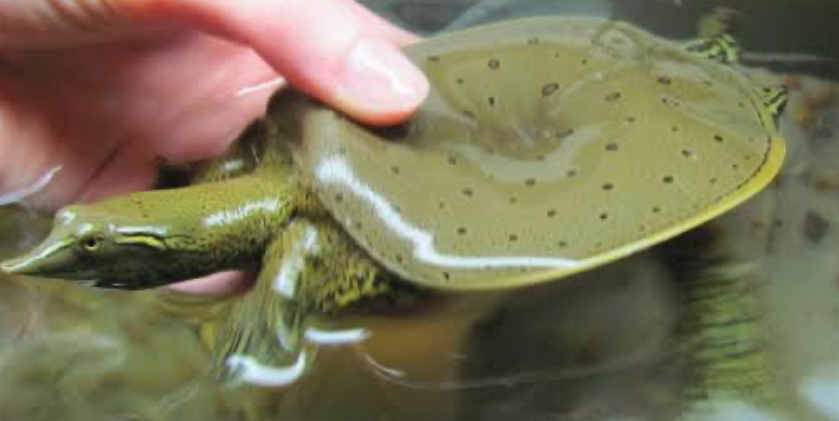
Some common aquatic turtle diseases are shell damage, fungal infections, and waterborne parasites, which are preventable with proper care.
Preventive Measures
Prevention is key when it comes to Pelodiscus sinensis illness prevention. Smooth substrates, stable warm temperatures, and super clean water are key to keeping your turtle healthy.
Health Warning Signs
Consult a vet with reptile experience if you notice anything off. Watch for warning signs like redness, swelling, lack of appetite, weight loss, or white patches on the shell or skin.
Following these softshell turtle health care basics can help you avoid common issues and keep your turtle thriving.
Lifespan and Long-Term Commitment
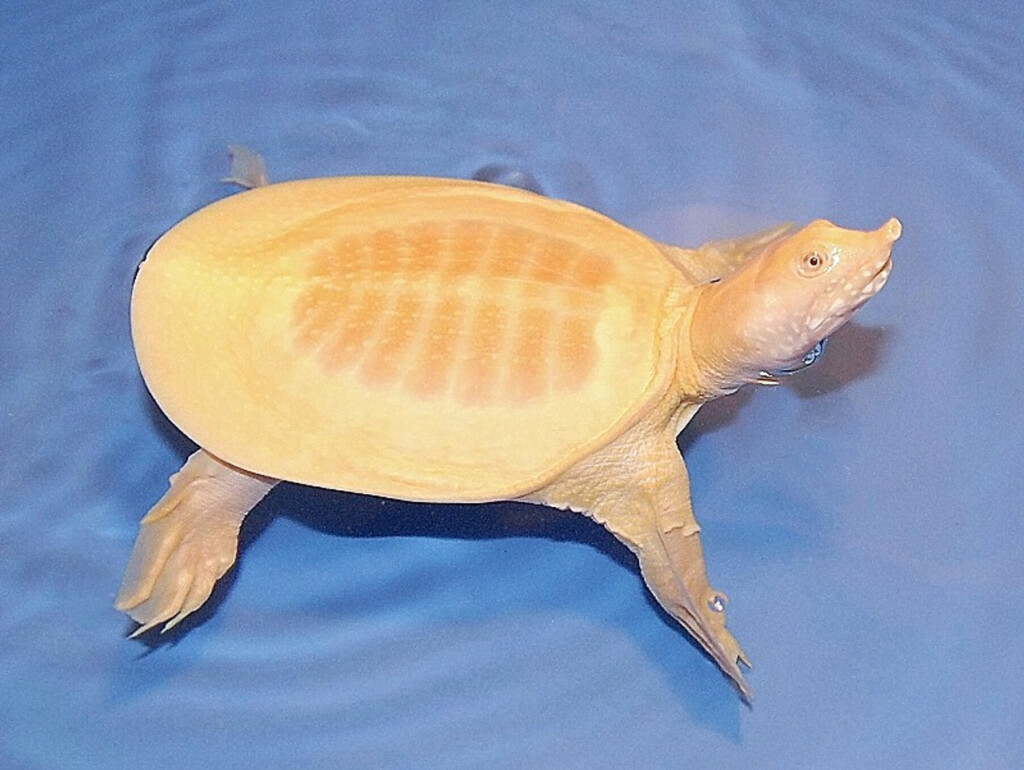
Let’s be real, long-term softshell turtle care is a big deal. These turtles live 15–25 years in captivity if you take care of them right. So, before getting one, be ready to invest time.
Maintenance Needs
To increase your Chinese Softshell Turtle lifespan, regular water changes and consistent feeding with high-protein meals and calcium are non-negotiable.
Growth & Space
As they mature, they get stronger and more independent. Pelodiscus sinensis maturity means upgrading to larger spaces as they grow, and eventually, you may need a pond.
Handling Note
Chinese Softshells are not cuddly pets. They get stressed out easily and can bite when frightened. Handling should be limited to essential moments, like tank cleaning or vet visits. Make sure you use both hands to support their body, keep movements slow, and avoid touching their head or limbs.
Conclusion
If you’re looking for an advanced turtle species to challenge and reward you, the Chinese Softshell turtle could be your match. Its fast movements, sharp instinct, and sleek appearance make it a fascinating pet.
This Chinese Softshell Turtle care summary is simple. Just remember that they need space, clean water, protein-rich diets, and proper heat. Stick to the care tips above, and you’ll have one happy turtle in your tank.
Owning Pelodiscus sinensis is not for everyone. Just be ready for a long-term commitment to one of the coolest turtles out there. If you decide to get one, let us know your experience in the comment box below.


